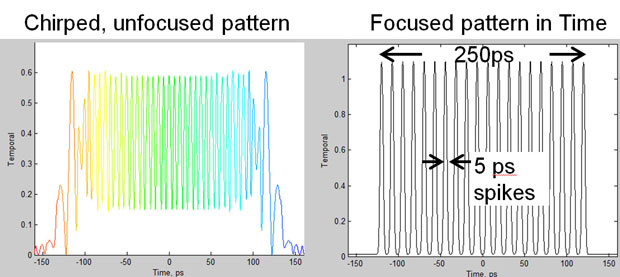John Heebner (16-FS-006)
Project Description
One of the primary challenges in achieving ignition at Livermore's National Ignition Facility originates from a classic interface problem of systems engineering, occurring at the front end of the laser producing the initial laser beams and at the start of the target and plasma interactions. Interfaces on complex systems tend to be weak points in the overall system because they often arise at a boundary between subsystems developed under distinct disciplines operating with different formalisms and subcultures. Despite the fact that the National Ignition Facility laser and target fabrication technologies are engineering marvels, estimates show that only about 1% of the laser energy makes it to the target and as intended for symmetric implosion. Enabling increased coupling of laser energy to the target would increase the potential for ignition and reduce the threat of high-energy, high-power laser damage. We plan to investigate the feasibility of novel strategies for improving the front end of the National Ignition Facility laser to more efficiently couple laser energy through the plasma, symmetrically onto targets. Specifically, we intend to (1) develop strategies for meeting increased laser energy and peak power; (2) determine the feasibility of pulse shaping with 1-ps resolution, versus the current 250-ps resolution; (3) determine dynamic wavelength modifications within the laser pulse (e.g., between the foot and drive portions); and (4) explore the feasibility of new diagnostics for measuring signatures of laser pulses modified by the plasma. We plan to identify common ground between the needs of the user and laser capability upgrades that are realistic. Our feasibility study will employ analysis and modeling to propose strategic upgrade paths for National Ignition Facility laser control and diagnostic capabilities.
Mission Relevance
Optimizing laser energy to the fusion target capsules will serve to forward progress for inertial fusion energy and stockpile stewardship science. This work also supports the related Livermore core competency of lasers and optical science and technology and the strategic focus area of inertial fusion science and technology.
FY16 Accomplishments and Results
In FY16 we (1) collaborated with plasma and laser physicists on strategies for increased laser energy and peak power; (2) explored the feasibility of pulse shaping with 1-ps resolution in simulations; (3) developed a new pulse-shaping concept, for which a provisional patent has been filed and which has already spun off a small capability development effort (see figure); (4) analyzed the feasibility of implementing dynamic wavelength modifications within the laser pulse and concluded that these modifications are feasible at the master oscillator but not in the preamplifier unless smoothing by spectral dispersion grating can be bypassed; and (5) began analyzing the feasibility of new diagnostics for measuring signatures of laser pulses modified by the plasma.






